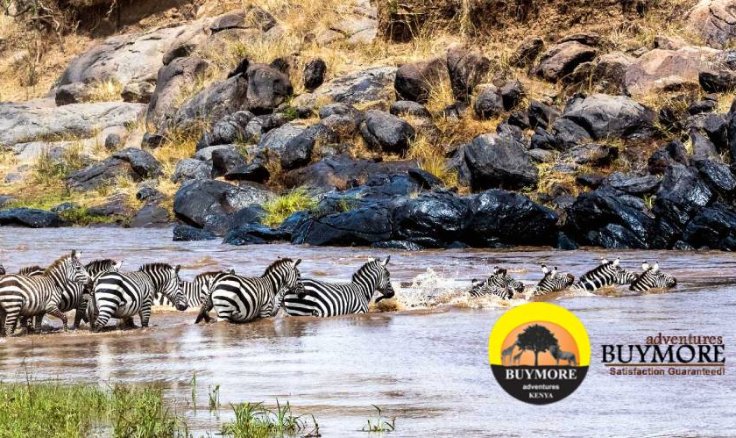What to Expect During the Wildebeest Crossing in Masai Mara?

The Masai Mara National Reserve is a famous wildlife reserve located in south-western Kenya. This reserve sets the stage for one of nature’s most thrilling spectacles, i.e., the annual wildebeest crossing. Over 1.5 million wildebeest, accompanied by zebras and gazelles, can make a courageous journey north from Tanzania’s Serengeti into the lush plains of the Masai Mara. Travelers can witness the wildebeest crossing, which is a bucket-list event filled with suspense, action, and unforgettable moments.
The Scene - Nature’s Epic Drama
Just imagine standing along the steep banks of the Mara River, surrounded by the open savannah and distant acacia trees. Suddenly, a growing movement sweeps the landscape. Wildebeest, in numbers blurring the horizon, start gathering at the water’s edge, and their anxious calls fill the air. Crocodiles lurk in the river, and lurking predators watch from nearby thickets. The tension is palpable, which feels like nature’s theatre at its finest.
The wildebeest crossing is rarely a smooth dash. The herds can spend prolonged hours milling on the banks and build up the courage to take the leap. At a sudden signal, a brave forerunner takes the plunge, and the spectacle erupts. Hundreds, sometimes thousands, surge into the river, while splashing and scrambling in a desperate bid to reach the far bank.
However, crocodiles seize the opportunity, and the powerful currents can be unforgiving. It is a story of resilience, as it’s the drive to survive and propagate the species that pushes the herds onward.
Wildlife Encounters and Dramatic Moments
While the wildebeest are the center of attraction and the crossing showcases the entire Mara ecosystem. Massive Nile crocodiles lie in wait under the muddy waters, perfectly adapted for their role as opportunistic predators. Lions, hyenas, and leopards patrol the banks as they know that the chaos provides perfect hunting opportunities.
Raptors circle above and are ready to scavenge. These predators add suspense and drama to every river crossing, while reminding onlookers that the Mara is untamed and unpredictable.
Every crossing is unique. Sometimes, the crossing occurs at multiple points along the river as different splinter groups attempt the perilous swim. Weather, herd size, and predator activity affect the outcome. Some crossings are over in minutes, whereas others linger for hours as the animals hesitate and regroup.
What are the Best Practices for Witnessing the Crossing?
If you want to increase your chances of seeing the crossing, consider booking a Masai Mara luxury migration safari package between late July and early October. However, August and September are the prime months. You should work with experienced local guides as they know the best crossing points. So, the tour guides can interpret herd behavior and prioritize safety and minimal disturbance to the animals.
Patience is essential during the Masai Mara budget safari tour. You may spend hours waiting, as the wildebeest are easily startled and changes in the direction of wind or the presence of predators can cause repeated retreats. You can prepare for long days outdoors, so don’t forget to bring sun protection, snacks, and water. A good camera with a zoom lens can help you capture the action without approaching too closely.
Bottom Line –
Witnessing the wildebeest crossing during a Masai Mara luxury safari is about more than thrilling action shots. This tour expedition reminds you of the interconnectedness of life, the cycle of survival, and the harsh realities of nature. The panoramic event inspires awe and deep respect for the resilience of Africa’s wildlife and the intricate balance of the ecosystem.
When the sun sets over the Mara and the dust settles, visitors leave with a sense of wonder. Consider booking the Masai Mara migration safari package through BuyMore Adventures and let us help you experience the best of Kenya.



 +254-20-2325654
+254-20-2325654 info@buymoreadventures.com
info@buymoreadventures.com